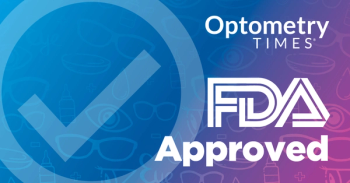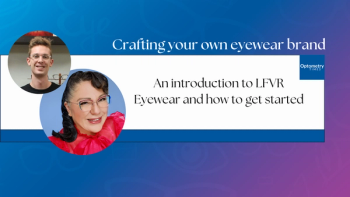
Eyecare March Madness: When teamwork goes wrong
It’s March Madness time, and the next few weeks will take college basketball fans on a roller coaster ride of synchronous alley oops and ill-timed, dribble-off-the-foot turnovers. I’m always looking for an apt sports metaphor to help pass the time and get me through the day. A guy can dream, can’t he?
It’s March Madness time, and the next few weeks will take college basketball fans on a roller coaster ride of synchronous alley oops and ill-timed, dribble-off-the-foot turnovers. I’m always looking for an apt sports metaphor to help pass the time and get me through the day. A guy can dream, can’t he? Recently, I found myself playing point guard to a streaking, gravity-defying vascular surgeon.
Setting up the play
A 79-year-old patient presented with a complaint that always causes my ears to twitch: “For a few weeks now, I’ve been losing my place when I try to read.” In someone that age, I immediately think “scotoma” and start looking for one and working down the list of possible causes.
His best-corrected visual acuity (BCVA) was OD 20/25 and OS 20/20. Amsler grid testing showed a small, dense scotoma near fixation in the right eye. There was no afferent pupillary defect (APD), but ophthalmoscopy revealed the problem: a silvery, translucent sliver of Hollenhorst plaque had clogged one of the arterioles adjacent to the superior border of the foveal avascular zone. I could see a small, well-circumscribed spot of whitish, retinal infarct, which correlated perfectly with his Amsler grid defect.
My patient had no history of diabetes, hypertension, or other vascular disease. I didn’t check for a bruit, but I knew the right internal carotid (ICA) was the first place to look for the root cause of the “twig” branch retinal artery occlusion (BRAO). There was a hungry-for-the-ball vascular surgeon just a couple of buildings over from me, but because my patient was going to see his primary-care provider (PCP) soon, I decided to pass to another player. I jotted down my findings in a note to the PCP, including the test my patient needed ASAP (carotid Doppler). When my patient visited his PCP a short time later, he gave the note to her staff.
Related:
Dropping the ball
And then, as was explained to me later, they “misplaced” it. My patient probably did his best to explain the situation to his PCP, but she apparently never saw my note. A lot was lost in the translation. She ordered a cholesterol test and lipid panel, and that was it.
His cholesterol and lipid findings were normal, and there was no follow-up scheduled. My patient told me what had happened, and I was pretty miffed. He mentioned to me that one of those mobile health-screening sessions, which included carotid Doppler, was coming to a church near his house very soon. I told him to go, get the ultrasound done, and get the results to me.
He did, and the carotid Doppler showed at least 70-percent blockage on the right side. My patient had already called his PCP by then and set up an appointment for a few days later.
This time, he would hang on to the envelope containing the test results for dear life until he was in the exam room and could hand it directly to the PCP. I told him the name of the vascular surgeon with the best reputation in the community. I also composed another note for him to hand to the surgeon, just in case.
The dream team
Related:
The vascular surgeon found even more blockage than the screening test, in addition to 40 percent on the left side. After he read my note, he explained to my patient that endarterectomy was imperative to reduce the risk of a blinding ocular vascular occlusion, not to mention a more severe cerebrovascular event.
The surgery was a success. The plaque was large and ulcerative. I had spotted its spawn wreaking havoc downstream and delivered “the rock” into a small window of opportunity just above the rim. A soaring surgeon with soft hands had collected it and slammed it home.
Calling a foul
And then…POOF! Just as my reverie was migrating toward late spring and 9th inning grand slams, my patient’s daughter related to me the instructions the nurse had given him at discharge: “If you should experience any changes in your vision, please go straight to the emergency room.”
OMG. LOL. SMH.
If there’s one thing we all know it’s that you should go to the ER for an eye problem ONLY if you have a large, sharp object sticking into one, or you know exactly what’s wrong with you and can lead the doctors and staff by the hand toward the exact ophthalmic subspecialist you require (speaking from personal experience, of course).
I have nothing but respect for my colleagues in the ER, but their reason for being is to douse large infernos and save lives, not diagnose and treat eye disease. Eyeballs are tiny things that often get lost in the shuffle. In my experience, the only time the “ophthalmologist on call” actually gets called is if the aforementioned sharp object is sticking in an eye. Otherwise, it’s a bottle of gentamicin and “call your ophthalmologist in the morning.”
The turnover
Now my patient knows better, and he would come straight to me if there were a problem. But many wouldn’t. So, if the OD-to-vascular surgeon tandem resulted in such a resounding slam dunk, then why did the nurse trip and dribble the ball off her own foot and out of bounds?
More from Dr. Brown:
Well, it’s not solely her fault; she was simply reading the script. But who wrote the script? And why, after all these decades of evolution and advances in eye care, and particularly in our profession, do such clumsy turnovers still occur?
I have some ideas about all that, and I’ll share them in this space next month. But I warn you: I might step on some size-12 Air Jordans in the process.
In the meantime, my patient is feeling better-and now that my father-in-law has more oxygen coursing to his brain, maybe he’ll come to his senses and stop pulling for the Kentucky Wildcats and start cheering for the right team.
Go Duke!
Newsletter
Want more insights like this? Subscribe to Optometry Times and get clinical pearls and practice tips delivered straight to your inbox.


















































.png)


